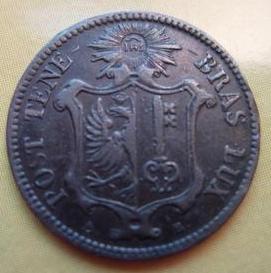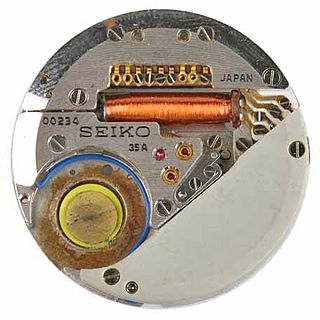
A watchmaker is an artisan who makes and repairs watches. Since a majority of watches are now factory-made, most modern watchmakers only repair watches. However, originally they were master craftsmen who built watches, including all their parts, by hand. Modern watchmakers, when required to repair older watches, for which replacement parts may not be available, must have fabrication skills, and can typically manufacture replacements for many of the parts found in a watch. The term clockmaker refers to an equivalent occupation specializing in clocks.

A clockmaker is an artisan who makes and/or repairs clocks. Since almost all clocks are now factory-made, most modern clockmakers only repair clocks. Modern clockmakers may be employed by jewellers, antique shops, and places devoted strictly to repairing clocks and watches. Clockmakers must be able to read blueprints and instructions for numerous types of clocks and time pieces that vary from antique clocks to modern time pieces in order to fix and make clocks or watches. The trade requires fine motor coordination as clockmakers must frequently work on devices with small gears and fine machinery.

IWC International Watch Co. AG, founded International Watch Company, better known as IWC Schaffhausen, is a Swiss luxury watch manufacturer located in Schaffhausen, Switzerland. Originally founded in Switzerland by American watchmaker Florentine Ariosto Jones in 1868, the company was transferred to the Rauschenbach family in 1880 after bankruptcy and has been a subsidiary of the Swiss Richemont Group since 2000.

Seiko Group Corporation, commonly known as Seiko, is a Japanese maker of watches, clocks, electronic devices, semiconductors, jewelry, and optical products. Founded in 1881 by Kintarō Hattori in Tokyo, Seiko introduced the world's first commercial quartz wristwatch in 1969.

ETA SA Manufacture Horlogère Suisse designs and manufactures quartz watches and both hand-wound and automatic-winding mechanical ébauches and movements. Commonly referred to as ETA, the company is headquartered in Grenchen, Switzerland, and is a wholly owned subsidiary of The Swatch Group.

Zenith SA is a Swiss luxury watchmaker. The company was started in 1865 by Georges Favre-Jacot in Le Locle in the canton of Neuchâtel and is one of the oldest continuously operating watchmakers. Favre-Jacot invented the concept of "in house movements", believing that only through control of the entire watchmaking process could the highest quality be achieved. Zenith was purchased by LVMH in November 1999, becoming one of several brands in its watch and jewelry division, which includes TAG Heuer and Hublot. Benoit de Clerck is president and CEO.

In horology, a tourbillon is an addition to the mechanics of a watch escapement to increase accuracy. Conceived by the British watchmaker and inventor John Arnold, it was developed by his friend the Swiss-French watchmaker Abraham-Louis Breguet and patented by Breguet on 26 June 1801. In a tourbillon the escapement and balance wheel are mounted in a rotating cage, with the goal of eliminating errors of poise in the balance giving a uniform weight.

Le Petit-Fils de L.-U. Chopard & Cie S.A., commonly known as Chopard, is a Swiss manufacturer and retailer of luxury watches, jewellery and accessories. Founded in 1860 by Louis-Ulysse Chopard in Sonvilier, Switzerland, Chopard has been owned by the Scheufele family of Germany since 1963.

Swiss made is a label or marking used to indicate that a product was made on the territory of Switzerland. It is also a geographical indication protected under different Swiss and international laws and treaties. According to the Swiss Federal Act on the Protection of Trade Marks and Indications of Source, a good or service may be designated "Swiss made" if:

A counterfeit watch is an unauthorised copy of an authentic watch. High-end luxury watches such as Rolex, Patek Philippe and Richard Mille are frequently counterfeited and sold on city streets and online. With technological advancements, many non-luxury and inexpensive quartz watches are also commonly counterfeited.

The Geneva Seal (English), Poinçon de Genève (French), or Genfer Siegel (German) is the official seal of the City and Canton of Geneva, Switzerland. When a variation of the official seal is applied to wristwatch movements, the Geneva Seal is the quality seal of the Watchmaking School of Geneva and it has an official purpose as defined by the law.

The quartz crisis (Swiss) or quartz revolution was the upheaval in the watchmaking industry caused by the advent of quartz watches in the 1970s and early 1980s, that largely replaced mechanical watches around the world. It caused a significant decline of the Swiss watchmaking industry, which chose to remain focused on traditional mechanical watches, while the majority of the world's watch production shifted to Japanese companies such as Seiko, Citizen and Casio which embraced the new electronic technology.

Bovet Fleurier SA is a Swiss brand of luxury watchmakers chartered 1 May 1822 in London, UK by Édouard Bovet. It is most noted for its pocket watches manufactured for the Chinese market in the 19th century. Today it produces high-end artistic watches with a style that references its history. The company is known for its high-quality dials, engraving and its seven-day tourbillon. The original Bovet watches were also among the first to emphasize the beauty of their movements with skeletonized views and highly decorative movements. Bovet watches were also among the first to include a second hand while the company has a tradition of employing women artisans, which is rare for traditional watch making companies in Europe. Pascal Raffy is the current owner.
Léon Louis Gallet (1832–1899), watchmaker, entrepreneur, philanthropist, and past family patriarch of the Gallet Watch Company of Switzerland, is considered as one of the primary architects and founders of the 19th century industrialization of the Swiss watchmaking industry.

Gallet (ˈgæl.eɪ) is a historic Swiss manufacturer of high-end timepieces for professional, military, sports, racing, and aviation use. Gallet is the world's oldest clock making house with history dating back to Humbertus Gallet, a clock maker who became a citizen of Geneva in 1466. The Gallet & Cie name was officially registered by Julien Gallet (1806–1849) in 1826, who moved the family business from Geneva to La Chaux-de-Fonds, Switzerland. Prior to this date, operations commenced under the name of each of the Gallet family patriarchs.

Henry Pitkin was a silversmith and watchmaker of Hartford, Connecticut.
The Gruen Watch Company was formerly one of the largest watch manufacturers in the United States. It was in business from about 1894 to 1958 and was based in Cincinnati, Ohio. It was founded in 1894 by German-born watchmaker Dietrich Grün, who changed the spelling of his name to "Gruen" because the letter ü does not exist in English.

Arcadia Watches is a Swiss brand of luxury watches established in 1858. In 1968, the brand ceased due to a decline caused by the introduction of quartz movements. It was relaunched in 2007 by Claude Sanz, owner and President of Maison Bunter based in Geneva, and the first new Arcadia watch, the AC01, entered the market in 2010.
Mühle-Glashütte GmbH nautische Instrumente und Feinmechanik is a German maker of nautical instruments, ship's timepieces and wristwatches, based in Glashütte, Saxony, founded in 1994, and refounded in 2007 following bankruptcy.
Langendorf Watch Company was a Swiss watchmaker known for its fine craftsmanship and great attention to detail. Around 1890, it was probably the largest producer of watches in the world. The company produced watches in Langendorf, Switzerland for exactly a century, from 1873 to 1973.















